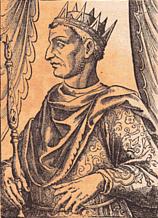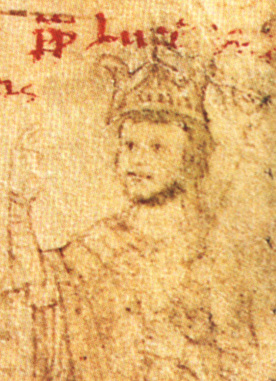| Papal election 1159 | |
|---|---|
| Dates and location | |
| 4–7 September 1159 Vatican Basilica, Rome | |
| Key officials | |
| Dean | Imar of Tusculum |
| Sub-dean | Gregorio della Suburra |
| Camerlengo | Boso Breakspeare |
| Protopriest | Ubaldo Caccianemici |
| Protodeacon | Odone Bonecase |
| Election | |
| Candidates | Bernard of Porto, Ottaviano de Monticelli, Rolando of Siena |
| Elected pope | |
| Rolando of Siena Name taken: Alexander III | |
 | |

The papal election held from 4 to 7 September 1159 following the death of Pope Adrian IV resulted in the election of two rival candidates. A majority of the cardinals elected Cardinal Rolando of Siena as Pope Alexander III, but a minority refused to recognize him and elected their own candidate, Ottaviano de Monticelli, who took the name Victor IV, creating a schism that lasted until 1178.
Contents
- Death of Adrian IV
- List of participants
- Absentee
- Divisions in the Sacred College
- Proceedings
- Election of Alexander III
- Election of Victor IV
- Consecration of Alexander III
- Consecration of Victor IV
- Manifests of both factions in October 1159
- Final division of the Sacred College of Cardinals in October 1159
- Schism
- Aftermath
- References
- Sources
The schism was a result of the growing tensions inside the Sacred College of Cardinals concerning the foreign policy of the Holy See. The Papal States in the 12th century were a buffer between the Holy Roman Empire and the Norman Kingdom of Sicily. After the Concordat of Worms in 1122, the Papacy allied with the Empire rather than with the Normans, but during the pontificate of Adrian IV (1154–59) this alliance broke up because Emperor Frederick I Barbarossa did not fulfil the terms of the treaty of Constance (1153) that obliged him to help the Papacy to restore its authority in Rome and in other territories controlled by the king of Sicily. [1] In these circumstances Adrian IV decided to break the alliance with the Emperor and to make peace with William I of Sicily by signing the Treaty of Benevento (1156). In the following years there were growing tensions between the papacy and Emperor Frederick I Barbarossa (e.g. a dispute at the diet of Besançon in 1157). Frederick tried – with significant success – to strengthen his influence on the Church in Germany. [2] The change of direction of the papal foreign policy resulted in the division of the Sacred College into supporters and opponents of the new policy, who were unable to achieve a compromise after the death of Adrian IV.
The election of 1159 had also significant legal consequences. Up to that time, the election of the new Pope required unanimity among the electors, which led to the schism when the existence of factions in the Sacred College made the unanimity impossible. [3] To avoid such schism in the future, the Third Lateran Council in 1179 promulgated the decree Licet de evitanda discordia , which established the rule that the Pope is elected with a majority of two thirds of the cardinals participating in the election. [4]












